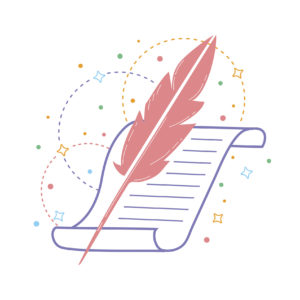
During April, the literary world is celebrating poetry. Poets influence art and society through their words. Different cultures see poetry in different ways. Hindi poets pull from their heritage and religion to show us the world through their eyes. Here are six Hindi poets to read this month.
Four Pillars of Romanticism
The Chhayavaad period of Hindi literature began around 1918 and continued through about 1937. It was a time of personal expression and self, with themes that revolved around love and nature. The best English translation is romanticism, the artistic movement of the late 1700s. In India, four poets were most prominent during the Chhayavaad period:
Jaishankar Prasad
Prasad has been compared to Shakespeare, Dante and Goethe and hailed as a literary genius. He wrote about art and philosophy, with a “sophisticated diction.” He is known for patriotic works that were part of the independence movement in India, but his best work is “Kamayani,” a poem about love and other emotions through metaphors of Indian mythology.
Sumitranandan Pant
Pant was another major poet during the Chhayavaad period. He was a left-wing progressive who was the first Hindi poet to receive India’s highest recognition for literature. His influences include Karl Marx and Mahatma Gandhi, rural India and English Romantic poets. He loved his country, and it shows in his works.
Mahadevi Verma
Verma has received some of India’s highest civilian awards and the highest accolades for her poetry. She is a freedom fighter, activist and poet of the highest caliber. In addition, she worked hard to get education for girls through this Hindi medium. When Verma was born, girls were considered a burden in the family, but her family was more liberal. Her mom was well educated and inspired Verma to write poetry. Verma used her pets as characters in many of her works.
Suryakant Tripathi
Known as Nirala, Tripathi was largely unrecognized during his life, which was quite troubled. He was a rebel, which earned him ridicule and derision. His poetry was unconventional and was not published. He protested against exploitation, asked political questions and did not follow the norm in content or form. His pseudonym, Nirala, means unique. His greatest poem, “Saroj Smriti,” is about the love he had for his daughter.
Ancient Poets Who Influenced Hindi Literature
Abdul Rahim Khan-e-Khana, a Pakistani poet believed to be a descendent of Lord Krishna, wrote a form of poetry called dohas, or couplets with a pattern and rhyme. He lived during the time of the Mughal ruler, Akbar, who had a love of literature. Khan-e-Khana, popularly known as Rahim, became one of Akbar’s prominent ministers. Rahim was also a translator and authored books on astrology.
Kabir lived during the 15th century, about 100 years before Rahim. Kabir was born to Muslim parents but taught by a Hindi teacher. Both religions influenced him, but he was highly critical of the ceremonial rites and rituals. His poetry suggests that he might have been persecuted for his views, but when he died, both Hindi and Muslim followers claimed him as inspiration. Many current Indian musicians and writers allude to Kabir’s poetry in their own work.
Finding Hindi Poetry
Many of the poems of these poets have been translated into English, but you do have to search for these versions. Hindi poets have a lot to say about their culture and heritage, and it’s worth the time to look for poems from India. Even though you may not fully grasp all the mythology or allusions, a poem is a beautiful work of art. These lines are from a poem by Kabir, translated by Rabindranath Tagore:
Where spring, the lord of seasons reigneth, there the unstruck music sounds of itself,
There the streams of light flow in all directions, few are the men who can cross to that shore!

